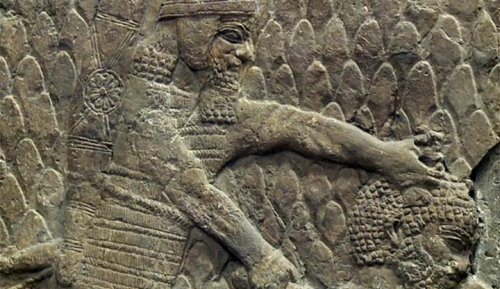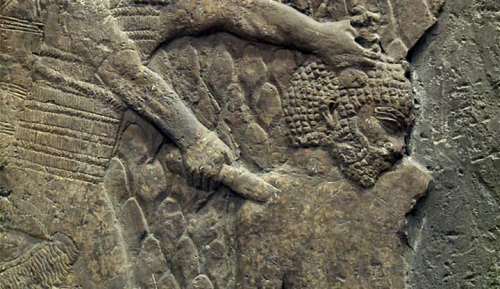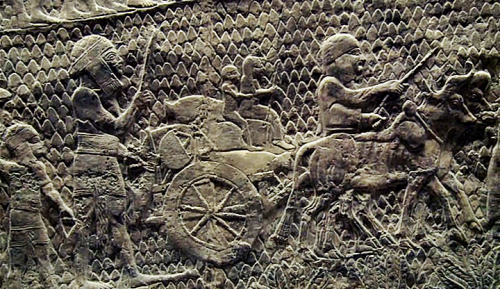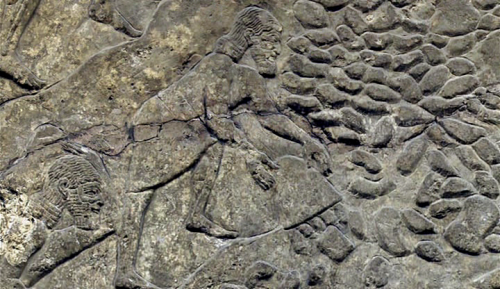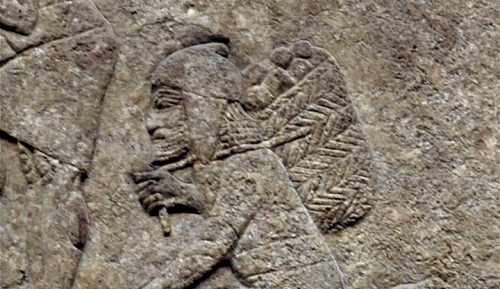#lachish

“Welive in a very comfortable tomb on the side of the cliff with nothing behind us but the desert until you reach the Red Sea.”–Olga Tufnell to her mother, in a letter dated 24th Nov 1927, from Qau el-Kebir, Egypt.
Olga Tufnell was one of the many trowelblazers who came to archaeology by a sideways route, but fell in love with fieldwork in the Near East. She was from a very well-off background, and the wide cultural interests of her mother, Blanche, which included travel, music and the arts, may have given her a head start. She had an elite education, including a semi-finishing school experience in Italy, where she took art classes, and in fact her considerable skills as a draftsperson became part of her archaeological career.
Olga’s mother also happened to be a close friend of (and related by marriage to) trowelblazer Hilda Petrie. At Hilda’s suggestion, a young Olga was taken on by the Petries - huge figures in Near Eastern and Egyptian archaeology- as the grand-sounding ‘Assistant Secretary to the British School of Archaeology in Egypt’. Her main role was fundraising, and helping with the annual exhibition of finds at UCL, but she sometimes also got to work on mending and illustrating pottery. Olga’s career-changing moment came in 1927 at the age of twenty two, when she was invited to join the final Petrie excavations at Qau el-Kebir in Egypt. She seems to have bitten by the archaeology bug, and stayed on to dig Tell Fara in Palestine, where she supervised excavations, and then the following two seasons at Tell Ajjul (until 1932), where she found an amazing burial complete with entire horse skeleton.

Equid burial at Tell Ajjul that Olga Tufnell excavated. Image courtesy of UCL Institute of Archaeology Collections (thanks to Rachel Sparks).
These experiences were the seminal years in Olga’s training, and she took pride in being one of the 'Petrie Pups’, along with others of her generation, some forming close personal and professional friendships – including the respected Egyptologist Margaret Murray.
Just after working at Tell Ajjul, Olga joined James Starkey (another of the Petrie crew) digging at Tell ed-Duweir, identified as the Biblical city of Lachish. Olga’s letters show she was given significant responsibility on site, and was part of the team that over six seasons discovered the famous Lachish Letters, although eventually the project ended just after Starkey was killed.
During WWII, Olga worked in diverse roles including with the BBC. After the war she began to publish on the results from Tell ed-Duweir along with other project members, which she continued for another 20 years. Her contested challenge to the accepted Iron Age chronology of the region was finally proven correct by later excavations.

Olga Tufnell at Tell ed-Duweir (the ancient city of Lachish). Used with the kind permission of the Palestine Exploration Fund, All rights reserved.
Olga continued to work in Near Eastern archaeology, especially pottery, and in the late 1950s she dug at Nimrud, where she likely met yet another trowelblazer, Agatha Christie, who worked there alongside her husband Max Mallowan. She also developed an interest in more recent Near Eastern culture, and collaborated with Violet Barbour in the development of the Palestine Folk Museum. Her interest in ornament seems to have led directly to what became the final major project of her life. From 1962, she undertook an exhaustive and meticulous collaborative study on scarab seals in Palestine, which used her early training in pottery chronology to show how scarab seals could be used for the same purpose.
As with many early trowelblazers, she took an interest in young students and researchers and was much loved and respected by her colleagues. The Tufnell archive is housed at the Palestine Exploration Fund, and the Lachish archive and collection are at the British Museum.
Letter: Ref. PEF-DA-TUF-0093
Written by John MacDermot, Palestine Exploration Fund. All images were provided with permission of the Palestine Exploration Fund.
Editing and additional content by Becky, posted by Suzie.
Ancient Worlds - BBC Two
Episode 2 “The Age of Iron”
TheLachish Relief, a series of stone panels which decorated the walls of the Assyrian king Sennacherib’s great palace at Nineveh. The reliefs narrate the story of the siege and capture of the city of Lachish,inJudah, in 701 BC.
The Lachish relief shows Sennacherib as an invincible king presiding over a perfect victory. Soldiers storm the town walls while a procession of prisoners are marched out of the town into exile, through the countryside, to be resettled elsewhere in the Assyrian Empire. Below them high officials and foreigners are being tortured and executed. The panel also depicts the looting of the city and the surviving men put to work in stone quarries (pictures n. 4, 5). Such scenes demonstrated the terrible consequences of rebelling against the Assyrian empire.
PART III
The British Museum, London, UK
Post link
Ancient Worlds - BBC Two
Episode 2 “The Age of Iron”
TheLachish Relief, a well-preserved series of stone panels which decorated the walls of the Assyrian king Sennacherib’s great palace at Nineveh. The reliefs narrate the story of the siege and capture of the ancient city of Lachish, inJudah, in 701 BC.
King Sennacherib reigned from 704 to 681 BC. He moved the empire’s capital to the ancient city of Nineveh and built the Great Palace of Nineveh, also known as the South-West Palace. Many rooms were decorated with alabaster wall reliefs.
The Lachish relief hold depictions of Assyrian siege ramps, battering rams, sappers, and other siege machines and army units, along with Lachish’s architecture and its final surrender. The reliefs also show scenes of extreme violence: the defenders of the city being thrown over the ramparts, impaled, having their throats cut and asking for mercy. Warfare is a recurring theme in Assyrian art and texts.
The single inscription on the reliefs reads:
“Sennacherib, the mighty king, king of the country of Assyria, sitting on the throne of judgment, before (or at the entrance of) the city of Lachish (Lakhisha). I give permission for its slaughter”
PART II
The British Museum, London, UK
Post link
Ancient Worlds - BBC Two
Episode 2 “The Age of Iron”
Lachishwas the second most important city in the southern kingdom of Judah,part of the Kingdom of Israel.
Occupation at the site of Lachish began during the Neolithic period and during the 10th and 9th centuries BC it was settled by the Israelites. It was heavily fortified, surrounded by two walls and ramparts and a royal palace was built on a platform in the center of the city.
In 701 BC, during the revolt of king HezekiahagainstAssyria, Lachish was besieged and captured by the Assyrian king Sennacherib. The Assyrian forces, in his invasion of the city, constructed the only siege ramp excavated in the ancient Near East. More than 1000 iron arrowheads were found in the ramp as well as a chain for catching the battering rams. Excavations also revealed approximately 1500 skeletons of men, women and children in one of the caves near the site, indicating the ferocity of the battle. The survivors were mass deported to Assyria, where they were forced to work as slaves.
The city was rebuilt in the late 7th century BC during the decline of the Neo-Assyrian Empire, but it fell to the greatest king of the Neo-Babylonian Dynasty, Nebuchadnezzar II in his campaign against Judah in 586 BC. After the fall of the Achaemenid Empire at the hands of Alexander the Great the site was abandoned and it has been unoccupied since then.
The events surrounding the conquest of Lachish by the Assyrians are recorded in the Lachish reliefs. The reliefs were part of the decoration of the South-West Palace of Sennacherib in Nineveh.
PART I
Tel Lachish, Israel
Post link

